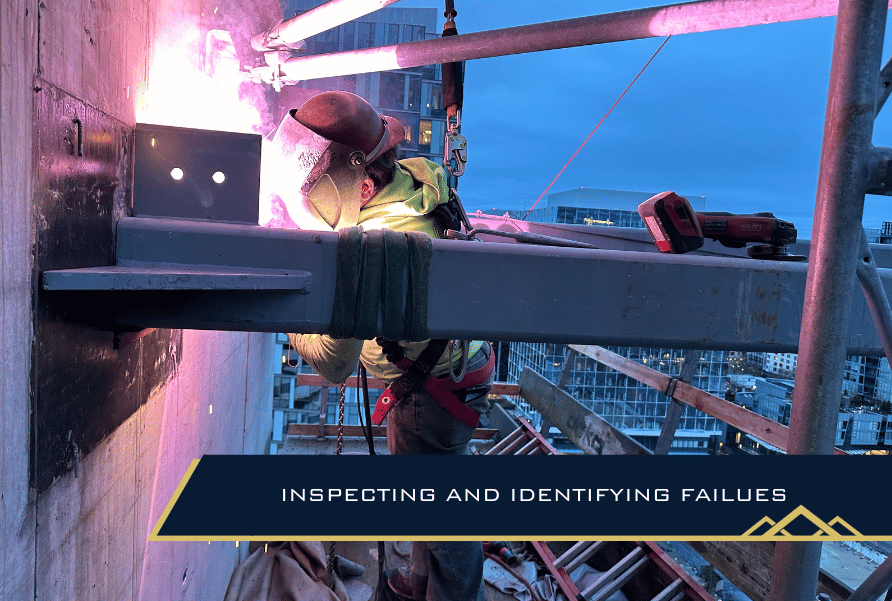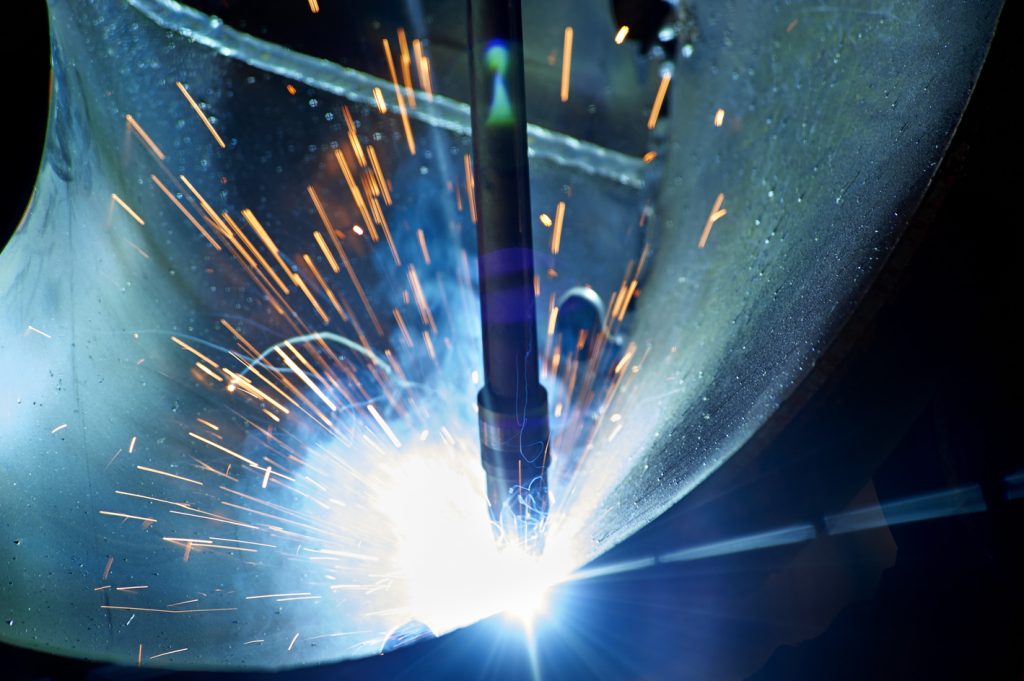Exploring the Value of Welding Evaluation in Industrial Applications: Safeguarding Versus Failures and Enhancing Longevity
Welding inspection offers as a critical line of protection in industrial applications, ensuring the architectural integrity and dependability of bonded elements. By methodically identifying problems such as porosity and insufficient blend, inspections not only avoid failings yet additionally extend the life expectancy of crucial assets. Sticking to market criteria enhances both safety and functional effectiveness; nonetheless, the ramifications of neglecting these practices can be extreme. As we analyze the diverse benefits of regular evaluations, it becomes apparent that comprehending these dynamics is not merely a matter of compliance yet a tactical crucial for longevity and threat mitigation (Welding Inspection Gilbert Arizona).
Role of Welding Evaluation
Welding assessment acts as a critical secure in industrial applications, making sure that bonded frameworks fulfill defined criteria of top quality and safety and security. This procedure entails a systematic examination of welds to validate their stability, toughness, and compliance with recognized codes and specifications. The duty of welding evaluation is multifaceted, including both visual evaluations and non-destructive testing techniques, which might include ultrasonic, radiographic, or magnetic fragment testing.

Additionally, welding assessment plays an essential role in regulatory compliance. Eventually, the duty of welding examination is essential in advertising safety and security, boosting performance, and protecting investments in industrial infrastructure.
Common Welding Defects

One of the most widespread flaws is porosity, identified by small gas pockets trapped within the weld metal. This occurs due to impurities or inappropriate protecting gas, jeopardizing the weld's stamina. One more considerable problem is incomplete fusion, where the weld steel stops working to bond correctly with the base material, possibly causing structural weak points.
Splits can likewise develop throughout or after the welding process, frequently credited to thermal tensions or inappropriate air conditioning rates. In addition, undercutting, where the base steel is worn down along the weld bead, can damage the joint and is commonly brought on by excessive warm input or wrong method.
Furthermore, absence of penetration takes place when the weld metal does not get to the root of the joint, causing inadequate stamina. Understanding these typical defects is vital for assessors and welders alike to ensure that welded frameworks satisfy safety and security and performance requirements, inevitably avoiding possible failings in commercial applications.
Benefits of Normal Evaluations
Routine inspections work as a critical secure in guaranteeing the integrity and longevity of bonded structures. These examinations determine prospective defects and weak points that might compromise the honesty of welds, enabling prompt remediation before concerns intensify. By implementing an organized inspection regimen, organizations can substantially lower the risk of catastrophic failures that pop over to these guys might lead to expensive downtime, devices replacement, and even mishaps.
In addition, normal inspections contribute to improved quality assurance throughout the welding procedure. By sticking to a constant assessment routine, business can guarantee that their welding methods meet recognized high quality benchmarks and best practices. This not just cultivates a society of responsibility however also encourages continual renovation amongst welding employees.
On top of that, regular inspections promote much better maintenance preparation. By determining wear and tear early, companies can tactically schedule substitutes and repair services, reducing disturbance to operations. This proactive strategy eventually results in extended property lifespan and boosted general productivity.
Finally, a commitment to routine inspections can improve a firm's track record in the sector. Stakeholders and customers increasingly worth organizations that focus on safety and high quality, therefore improving trust fund and potentially causing increased service opportunities.
Market Criteria and Rules
Abiding by market standards and laws is an essential facet of welding evaluation that enhances the benefits of normal evaluations. These criteria, established by companies such as the American Welding Culture (AWS) and the American Society of Mechanical Designers (ASME), provide a structure for ideal techniques in welding processes, products, and examination techniques. Conformity with these regulations makes certain that welds meet the called for high quality and safety and security criteria, considerably minimizing the threat of structural failures.
Governing bodies like the Occupational Safety and Wellness Administration (OSHA) further impose standards that shield workers and the atmosphere throughout welding operations. By following these established criteria, industries can enhance the reliability of their structures and elements, ensuring they carry out as intended under various functional problems.
Additionally, adherence to market requirements promotes consistency in top quality control, facilitating smoother interaction amongst stakeholders and regulative companies. This alignment not just lessens obligation risks but additionally boosts the reputation of companies in open markets. Ultimately, conformity with welding requirements and policies is not merely a lawful responsibility; it is an important investment in safety and security, efficiency, and important site long-term functional success.
Future Trends in Welding Evaluation
As industries proceed to develop, the future of welding evaluation is positioned to integrate sophisticated modern technologies that improve precision and effectiveness. One of one of the most considerable patterns is the fostering of automation and robotics in inspection processes. Automated systems can carry out inspections quickly, lowering human error and raising throughput in producing settings.
Additionally, the integration of man-made knowledge (AI) and device understanding algorithms will certainly enable predictive analytics, enabling real-time assessments and positive upkeep (Welding Inspection Gilbert Arizona). By evaluating information from previous inspections, these innovations can recognize patterns that could show potential failures, therefore extending the life-span of welded elements

Additionally, the pattern in the direction of digitalization will result in enhanced information management systems that help with much better monitoring, reporting, and conformity with industry requirements. In summary, the future of welding inspection is characterized by technological developments that guarantee to substantially boost integrity, safety and security, and functional performance in numerous commercial applications.
Final Thought
Finally, welding assessment offers a crucial feature in making sure the stability and toughness of welded structures across various commercial applications. By recognizing flaws such as porosity and insufficient combination, regular evaluations play a considerable role in risk reduction and top quality guarantee. Adherence to sector criteria and laws further boosts functional safety and security and integrity. As innovations in modern technology proceed to advance, the future my response of welding examination assures enhanced precision and efficiency, inevitably adding to the long life of essential infrastructures.
Welding examination offers as a vital line of defense in commercial applications, ensuring the architectural honesty and dependability of bonded components.Welding evaluation serves as an important safeguard in industrial applications, making certain that welded structures satisfy defined standards of high quality and safety and security - Welding Inspection Gilbert Arizona. Ultimately, the function of welding examination is essential in promoting safety and security, enhancing performance, and shielding financial investments in industrial facilities
These criteria, developed by organizations such as the American Welding Society (AWS) and the American Society of Mechanical Engineers (ASME), give a structure for best practices in welding processes, products, and inspection methods.In verdict, welding inspection serves a vital function in guaranteeing the integrity and toughness of bonded frameworks throughout numerous industrial applications.